I am a huge advocate for self-improvement, professional recognition and accreditation. I came to learn fairly quickly that I was not as naturally gifted in the classroom as some others, but that didn’t mean I could not prevail, and it drove me even more to succeed. Without romanticising too much, I have come rank bottom of every career course I have attended academically but have still made a successful career in the Army as a soldier and have just been selected for a Late Entry Commission in REME. I have achieved all I have by setting myself achievable goals and being dogmatic about achieving them, in fact I would go as far as to say I was relentless.
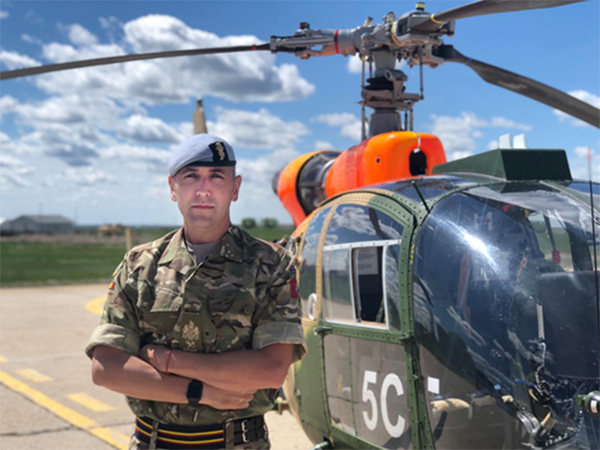
Benn Wathey IEng, FIMechE, Senior Aircraft Engineer
I fundamentally believe that you can be what you want to be in life: if you are willing to sacrifice some things and dedicate yourself to what it is you want to be. I think being professionally registered is important, to borrow line from the IMechE website “... it provides you with a global benchmark of engineering excellence. It demonstrates that your skills and experience have met an industry recognised standard.”
"Be bold. Explore. Take a risk."
When I was in secondary school, I envied the aspiring doctor and wannabe lawyer: how did they know what they wanted to be at such a young age? I have come to realise that it is ok to not to know what you want be to a point, but then you must take a leap. Be bold. Explore. Take a risk.
29 (BATUS) Flight Army Air Corps and the role of the Senior Aircraft Engineer
29 (BATUS) Flight Army Air Corps is located at the British Army Training Unit Suffield (BATUS) in Alberta, Canada. They operate and maintain five Gazelle AH Mk 1 aircraft; it is the British Army’s sole overseas aviation engineering assignment in which the aircraft are maintained entirely by military engineers. The organisation consists of 15 permanent staff, including aircrew, engineers and logisticians, which are supplemented with 15-person quarterly rotations of temporary staff from the UK.

The Senior Aircraft Engineer role is a Warrant Officer Class 1 Artificer Sergeant Major (WO1 (ASM)) whom, post interview and suitability assessment from the platform Chief Aircraft Engineer (CAE), is delegated engineering authorisations equivalent to those held by an SO2 (Officer Commanding (Major)).
As the current Senior Aircraft Engineer, I am the custodian of:
- the aircraft and its support equipment
- the aircrew flying equipment
- logistical operations and associated tooling to support the entire organisation.
I am ultimately responsible for, and accountable for, all aviation engineering activities including medical evacuation operations for all exercising troops, BATUS staff, their dependants, Canadian Forces and their families. Additionally, I also oversee the training, assessment and subsequent authorisation of aircrew, ground crew and technicians with engineering and non-engineering authorisations.
Personal and professional challenges for engineers and technicians working in Canada
29 (BATUS) Flight Army Air Corps is THE most unique and sought-after assignment in Army aviation. However, as with all units located thousands of miles from UK shores, and especially one operating an aircraft which is well-overdue its out-of-service-date (OSD), it brings with it a series of challenges to navigate, and thus exposing their associative opportunities to exploit.
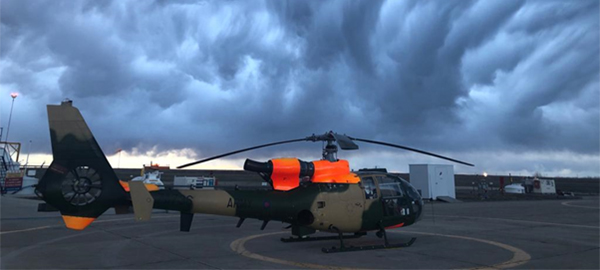
An obvious and immediate challenge I experienced on my arrival, was the inescapable communication lag that can occur when a unit resides on the western edge of North America, seven hours behind the UK. This can be paralysing at times, especially if technical or safety advice is required to release an aircraft for flight, and that advice must be sought from an external organisation based in the UK, i.e. JHC, DE&S and/or the Mil CAMO.
Instilling a shared consciousness
Noticing that individuals within the engineering team were managing these instances in their individual silos, I suggested two courses of action to remedy the communication lag. Firstly, I implemented a collaborative mailbox mailbox (a communication method I had seen work well in the past in smaller organisations) which the entire team would work from. This I knew would instil a shared consciousness within the team, allowing all members to see what each other were working on, allowing them to offer advice if they saw an answer other did not, and be able to take on someone’s work who may be absent. This would have a secondary benefit as a teaching and mentoring tool, allowing those technicians who may have shied away from, or struggled with written communication to absorb the more adept communicators methods and prose and communication techniques.
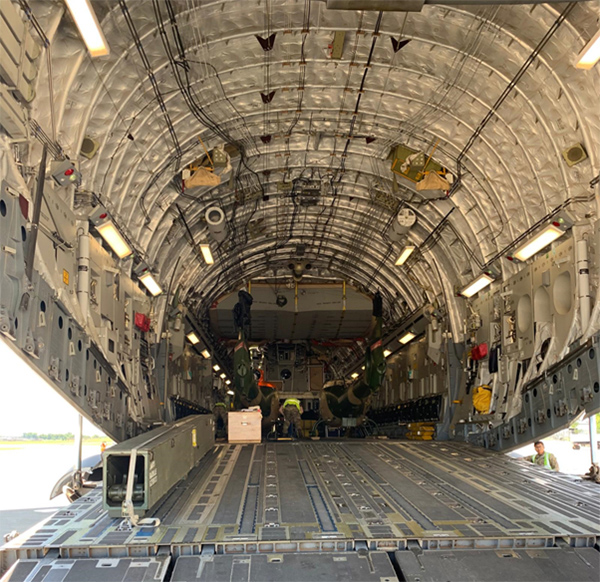
“allowing all members to see what each other were working on, allowing them to offer advice if they saw an answer others did not”
A culture of ownership
Secondly, I engendered a culture of extreme ownership, this is where my team would assume the authority - I would retain responsibility - to communicate with all external agencies to resolve engineering or logistical challenges. This novel level of empowerment and flatter hierarchal engineering command and control (C2) ultimately leadership; sacrificing control in order to command, immediately stimulated the proactive synapses within the engineering team. Within days I, as a cc, witnessed a surge of exquisite technical enquires pummel the group mailbox.
These contained:
- detailed technical schematics requesting advice from delivery teams
- vlogs of suspected damage sent to the Mil CAMO for analysis and review
- non-destructive techniques sent via video clip to specialist cells in the UK.
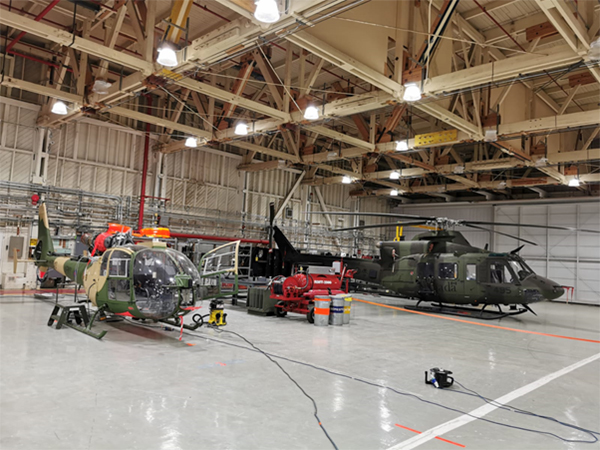
Needless to say, however these subtle changes led to multiple organisations commenting on the professionalism and assiduousness of the engineering team.
Team dynamics: integrating the temporary staff
A slightly more fundamental but equally critical challenge, is that of managing the team dynamic throughout the year, considering at least half of the team would rotate out every four months. Ordinarily, a soldier’s assignment is two to three years; this length of time allows for working relationships to form, bonds and cohesiveness to be generated, an engineering camaraderie as such.
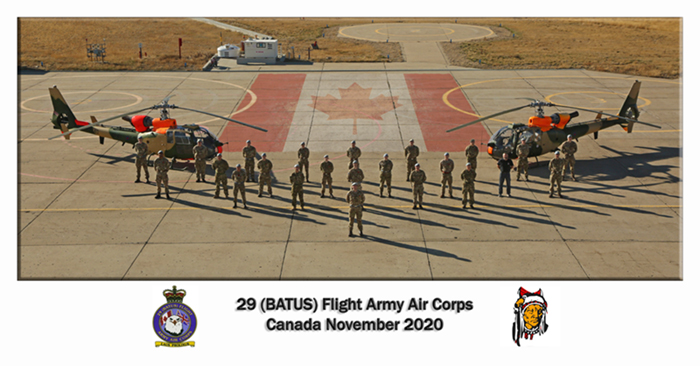
This is critical in terms of one’s openness and vulnerability when we consider air safety as we, our limbic brain, must feel psychologically safe in order to own up to mistakes and to speak up when we feel something is wrong or perhaps needs challenging. If this is absent in half of the organisation, we would certainly be at a higher risk of a human-induced error, which could be potentially catastrophic. Given that we do not have this luxury of two to three years to build this familial group with the temporary staff, it is vital then that the permanent staff inculcate in them quickly a sense of belonging and togetherness.
“our limbic brain, must feel psychologically safe in order to own up to mistakes and to speak up when we feel something is wrong or perhaps needs challenging”
To that end, I ensure as soon as the temporary staff arrive they are met warmly and openly by all the entire team. The initial day or two after their arrival is then consumed with briefs and interviews to familiarise themselves with the day to day processes and conduct expected of them (we call this Exercise DAWN FLIGHT). I would then conduct interviews with the engineers to discuss their aspirations and desires whilst they are working as part of my team, so I can understand what makes them tick. My subordinate leaders (SNCOs) will also deliver secondary responsibility briefs which they will own during their tenure and be stood by to answer their immediate questions. The ground crew SNCO delivers cold weather briefs and conducts clothing checks to ensure they were equipped for the winter or summer months as both are harsh. Finally, the Officer Commanding gives them a warm welcome and suggests a team meal in a less formal setting, to engender further the team ethos.
"We share food together, you are safe and welcome here".
Working in the Canadian climate
Alberta is a province of two extremes. The temperature during the summer months can regularly reach over 30 degrees Celsius for weeks on end, and in the winter drop to a teeth-chattering minus 40, although most ex-patriots will tell you it’s a different type of cold! What exacerbates this dichotomy of extremes is the additional North American weather factors, which can throw all manner of curve balls at you: tornados, snow scrawls and winds raging across the prairie at 100+km an hour, like I said, extreme!

In terms of the impact on the working environment and our people, it is essential that we educate, train and equip them for all weather scenarios. A period of training consisting of seminars, practical lessons and demonstrations is delivered to new permanent staff members or the arriving temporary staff by the Flights SERE (Survive, Escape, Resist & Evade) instructor. Thankfully, this seems to hit the mark, as we have yet (on my watch) to have an individual suffer with any climatic injury, although they can be common amongst the exercising troops. It also vital that the weather is kept a close eye on all the time. Imagine planning a two week camping trip, in advance, in the UK. You could probably say with a high degree of confidence that you will know if it is going to rain a week or so out, that is not the case in Canada. The weather can literally turn on a dime, so you must make sure you are prepared if you venture further afield than the base.
This is critical during winter trans-Atlantic aircraft moves where a Gazelle is flown to Calgary Airport (YYC as its known) to fly back to the UK for Depth maintenance to be conducted. To facilitate this the technicians must drive the two and a half hours down treacherous Trans-Canada Highway to prepare the aircraft for loading onto a C17 or similar. No one departs the base without a kit check to ensure they have water, warm kit, food, fuel and fire lighting capabilities, as well as the tooling to conduct the task.They are also reminded of the necessity of this through a couple of vignettes told by myself and the SERE instructor who have trained in the Artic and been caught out in the snow and ice in Canada, although we were equipped to survive the night if the worst had arisen.

Prior preparation prevents a poor performance as we say. Oh and the mosquitos during the summer, as you can imagine they are another unwelcomed distraction when working outside at dusk or dawn. Needless to say “Deet” is a must have at all times.
I believe professional registration and membership of IMechE shows commitment and dedication to your craft, and so I am proud and loyal member of IMechE. I recommend that you get professionally registered as early as you can. As an IMechE interviewer I find it immensely rewarding to sit and engage with other engineers who are aspiring to achieve their personal goals. In terms of my own goals, I am determined, by 2022, to have completed an MSc in Engineering Management and gained my Chartered Engineer.